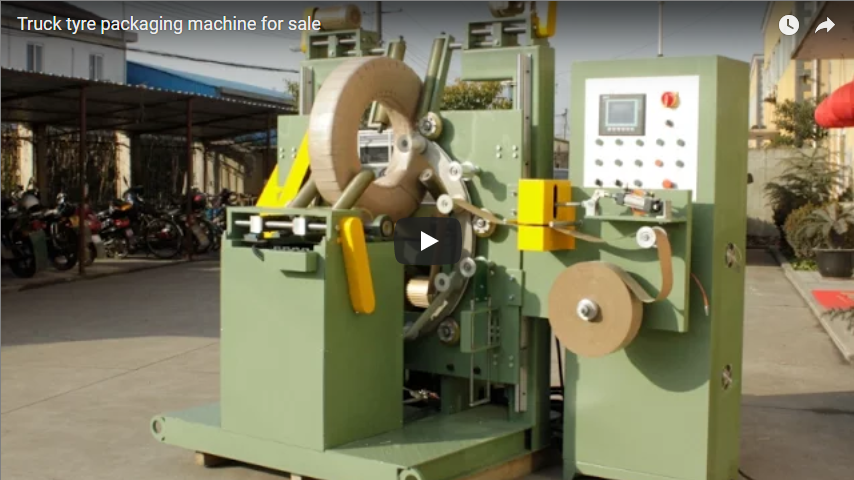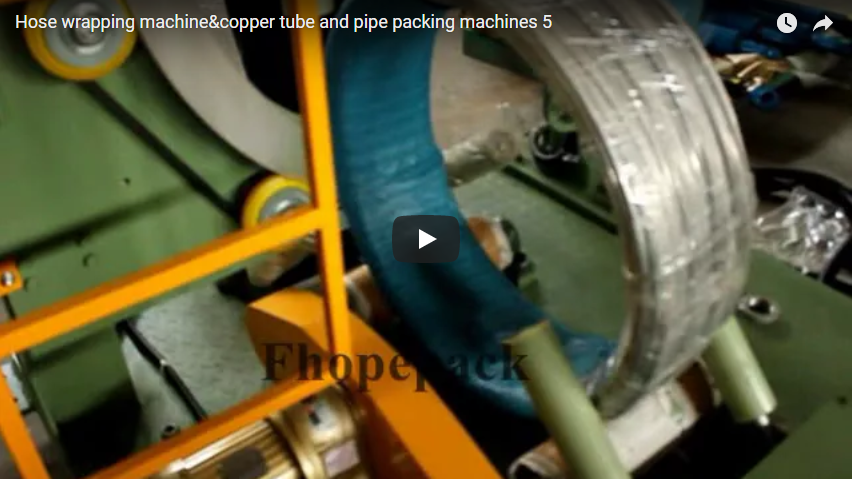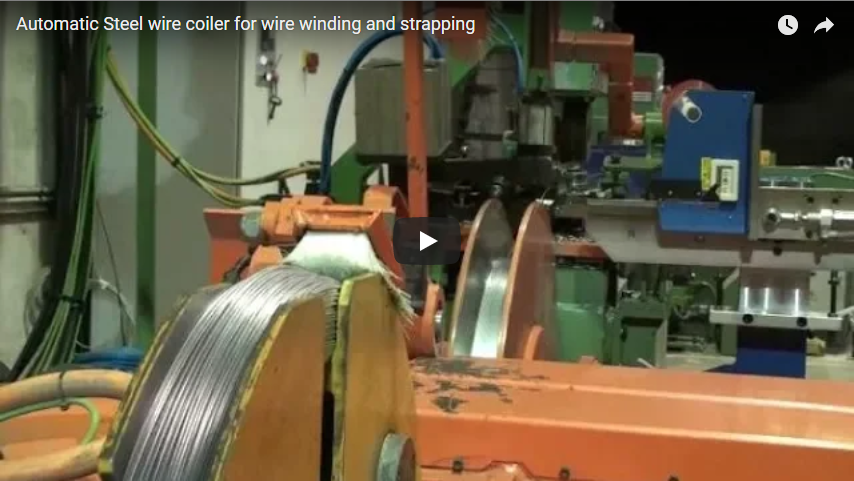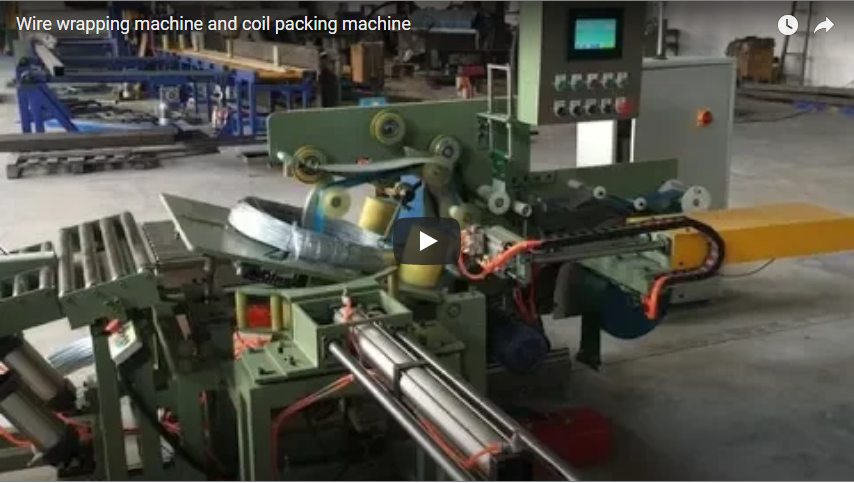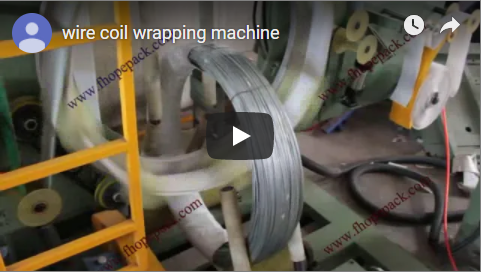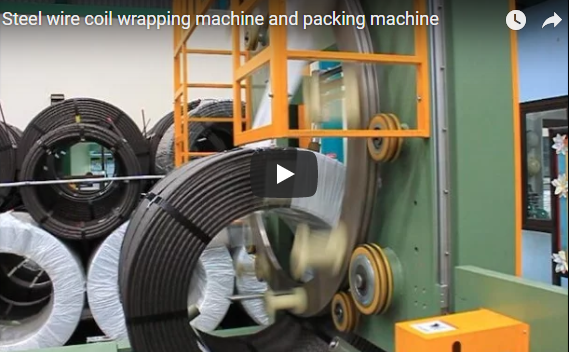Revolutionizing Wire Production: A Deep Dive into the Full-Automatic Steel Wire Coiling and Strapping Machine
In the demanding world of steel wire manufacturing, efficiency, precision, and safety are paramount. Traditional manual or semi-automatic coiling and strapping processes often present bottlenecks, leading to increased labor costs, inconsistent package quality, and potential safety hazards. Say goodbye to these inefficiencies with the advent of fully automated solutions. This article explores the technical intricacies, design principles, operational benefits, and user experience of our state-of-the-art Full-Automatic Steel Wire Coiling and Strapping Online Machine.
1. The Challenge: Overcoming Manual Handling Limitations
Manual handling of heavy steel wire coils is labor-intensive, slow, and poses ergonomic risks. Achieving consistent coil dimensions and secure strapping manually is challenging, often resulting in variations that impact downstream processes and logistics. Semi-automatic systems offer improvements but still require significant operator intervention. The need for a seamless, integrated online solution that minimizes human touchpoints while maximizing throughput and quality is clear.
2. The Solution: Integrated Automation for Peak Performance
Our Automatic Steel Wire Coiling and Strapping Machine is engineered to operate directly inline with your wire drawing or processing line. It seamlessly integrates the coiling and strapping phases into a single, continuous automated process. This eliminates manual handling between steps, drastically reducing cycle times and boosting overall production efficiency.
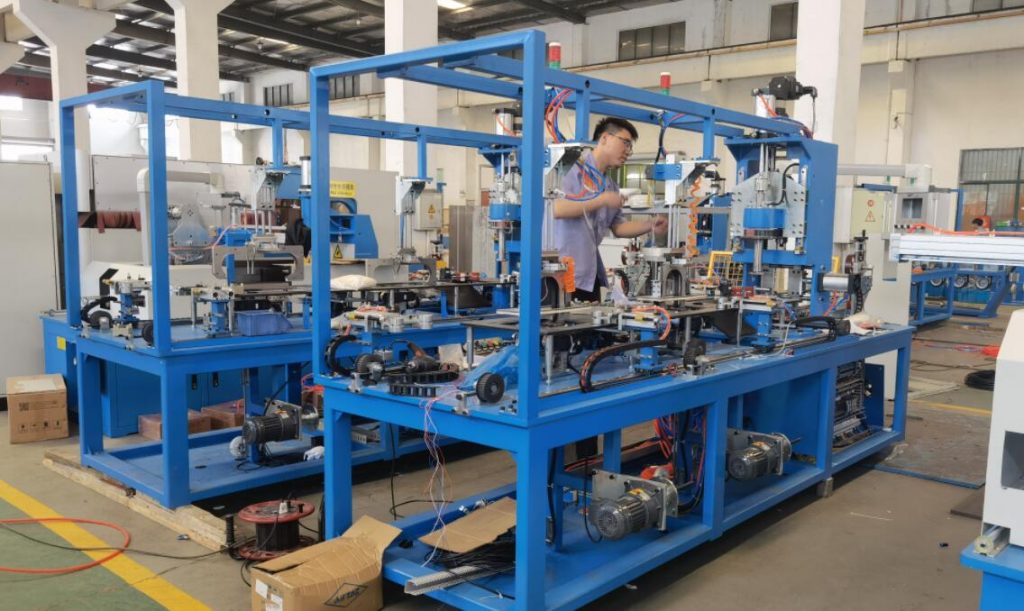
3. Technical Deep Dive: Design, Structure, and Components
Understanding the engineering behind this machine reveals its capabilities:
3.1 Design Philosophy and Structural Integrity
- Robust Construction: Built with a heavy-duty steel frame designed to withstand the rigors of continuous industrial operation and manage the dynamic forces involved in coiling heavy wire.
- Modular Design: Facilitates easier integration, maintenance, and potential future upgrades. Components are strategically positioned for accessibility.
- Safety-Centric: Incorporates comprehensive safety guarding, emergency stops, and sensor-based interlocks compliant with international safety standards.
3.2 Key Component Breakdown
- Wire Accumulator/Dancer: Ensures consistent wire tension feeding into the coiler, compensating for any upstream speed variations.
- Precision Coiling Head: Servo-driven or hydraulically powered mechanism designed for accurate layer winding and consistent coil formation. Features adjustable parameters for different coil sizes (ID/OD/Width).
- Traversing Unit: Precisely guides the wire across the coiling head to ensure neat, level layers, critical for stable and dense coils. Often utilizes ball screws and servo motors for high accuracy.
- Automatic Cutter: Cleanly and reliably cuts the wire upon reaching the desired length or weight.
- Coil Compacting & Ejection System: Gently compacts the finished coil (if required) and smoothly ejects it towards the strapping station.
- Indexing Strapping Head(s): High-performance strapping units (typically using PET or steel strap) automatically index around the coil at pre-programmed positions (e.g., 3, 4, or 6 straps) for secure bundling. Features include automatic strap feeding, tensioning, sealing (heat seal or friction weld for PET), and cutting.
- PLC Control System: The brain of the operation, typically using Siemens, Allen-Bradley, or similar industrial PLCs. Manages all sequences, monitors sensors, stores recipes for different wire/coil specifications, and provides an HMI (Human-Machine Interface) for operator control and diagnostics.
- Sensors & Feedback Loops: Numerous sensors monitor wire presence, coil diameter, strap tension, and machine status, providing real-time feedback to the PLC for precise control and fault detection.
3.3 Illustrative Technical Specifications (Example Parameters)
| Parameter | Specification Range (Typical Example) | Notes |
|---|---|---|
| Wire Diameter Range | 1.0 mm - 16.0 mm | Varies significantly based on machine model |
| Coil Inner Diameter (ID) | 300 mm - 800 mm | Adjustable |
| Coil Outer Diameter (OD) | 500 mm - 1400 mm | Adjustable |
| Coil Width | 50 mm - 600 mm | Adjustable |
| Max. Coil Weight | Up to 2500 kg | Dependent on frame and drive capacity |
| Coiling Speed | Up to 150 m/min (or sync with production line) | Variable speed control |
| Strapping Type | PET or Steel Strap | Specify required strap type and dimensions |
| Number of Straps | 3, 4, 6 (Programmable) | Radial strapping |
| Control System | PLC (e.g., Siemens S7 series) with Touchscreen HMI | Provides diagnostics and recipe management |
| Power Supply | 380V/415V, 50/60Hz, 3-Phase | Check specific requirements |
| Compressed Air | 6-8 Bar | Required for pneumatic components (if any) |
Note: These are indicative values. Actual specifications depend on the specific machine configuration tailored to customer requirements.
4. Operational Workflow & Efficiency Gains
The automated online process typically follows these steps:
- Wire Infeed: Wire continuously feeds from the production line through the tension control unit.
- Automatic Coiling: The coiling head winds the wire to the pre-set length or weight, with the traverser ensuring neat layering.
- Wire Cutting: The automatic cutter severs the wire precisely.
- Coil Transfer: The finished coil is transferred automatically from the coiler to the strapping station.
- Automatic Strapping: The strapping head(s) apply the specified number of straps at designated positions around the coil periphery.
- Coil Discharge: The securely strapped coil is discharged onto a conveyor, roller table, or accumulation station for removal or further processing, such as wrapping. Explore options like specialized wire coil wrapping machines for enhanced protection.
Efficiency Impact:
- Labor Reduction: Significantly reduces or eliminates manual labor for coiling and strapping.
- Increased Throughput: Continuous online operation matches production line speed, eliminating bottlenecks.
- Consistency: Guarantees uniform coil dimensions and strap placement/tension, improving package quality and stability.
- Enhanced Safety: Removes operators from potentially hazardous manual handling tasks.
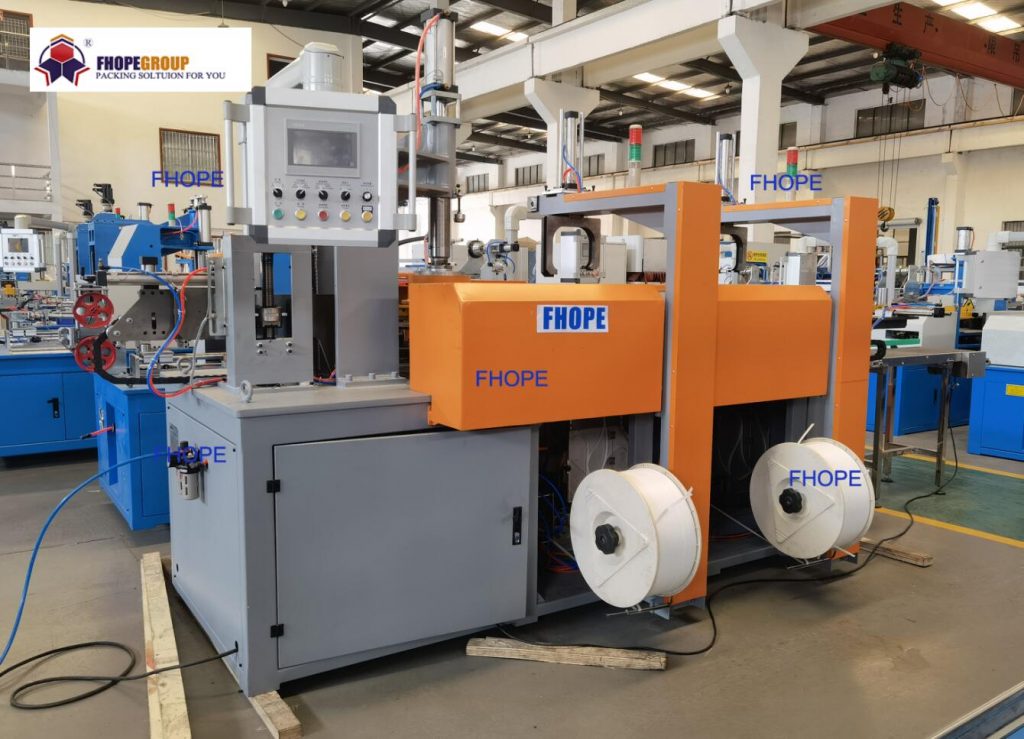
5. User Experience and Application Insights
From an operational standpoint, these machines offer significant advantages:
- Ease of Use: Modern HMI interfaces allow for intuitive operation, recipe selection for different products, and clear diagnostic feedback.
- Reliability: Designed for continuous operation, these machines boast high uptime when properly maintained. Key components are selected for durability in industrial environments.
- Maintenance: While complex, modular design and good diagnostics facilitate troubleshooting. Preventative maintenance schedules are crucial for longevity. Access points for routine checks and consumable replenishment (like strap coils) are typically well-considered.
- Versatility: Capable of handling a range of wire types (carbon steel, stainless steel, galvanized wire, PC strand, etc.) and sizes within their specified limits.
Industries Benefiting:
- Steel Wire Manufacturing
- Wire Drawing Plants
- PC Strand Production
- Fastener Manufacturing Feedstock
- Cable and Rope Industries
6. The Automation Advantage: Moving Beyond Manual
Compared to manual or semi-automatic methods, the full-automatic online system provides:
- Superior Speed: Unmatched cycle times aligned with production output.
- Unwavering Quality: Consistent coiling and strapping parameters eliminate human variability.
- Improved Safety: Minimizes operator exposure to moving machinery and heavy loads.
- Better Space Utilization: Integrated design often requires less floor space than separate manual stations.
- Data Integration: Potential for connectivity with plant-level control systems (MES/ERP) for production tracking and analysis.
Conclusion: Investing in Future-Proof Wire Packaging
The Full-Automatic Steel Wire Coiling and Strapping Online Machine represents a significant technological advancement in wire production finishing. By integrating these critical steps into a seamless, automated workflow, manufacturers can achieve substantial gains in productivity, package quality, operational safety, and cost-effectiveness. Embracing this technology is not just about automation; it's about optimizing the entire production value chain and positioning your operation for sustained success in a competitive global market. This investment paves the way for smarter, faster, and more reliable wire packaging solutions.

